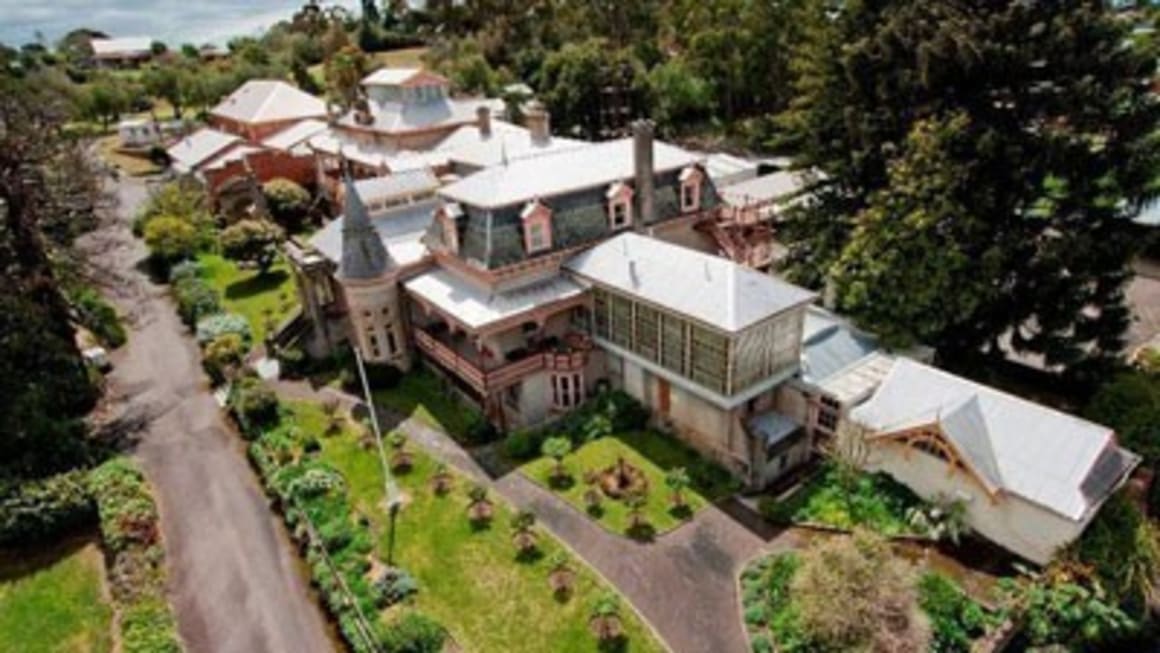Bendigo's Fortuna Villa heritage trophy estate finally sells

Fortuna Villa, one of Bendigo's finest heritage-listed estates, is set for new ownership and restoration having sold post-auction for $2.21 million to the underbidder, adman Paul Banks.
The $3 million auction price was fool's gold, as it was never settled by its mystery buyer.
With a Pompeii fountain, parade ground, coach house, stables and, the seven bedroom mansion, the estate dates back to George Lansell who was the gold-rush town's quartz king.
It went to April auction when listed by the Defence Department whose signals section had taken up occupancy in the 1940s.
But its $3 million auctipn sale fell through.
Paul Banks, the advertising and marketing company owner will now endeavour to have the property rezoned to allow its utlisation by members of the public.
“Once we get a lick of paint on it we can get it opened up for functions, put a couple of bathrooms in it here and there and open it up for boutique style accommodation,” he told the Bendigo Advertiser.
Mr Banks has secured the property for about $2.21 million, a substantial discount to the $3 million April auction price, when the local press speculated it had sold to Chinese interests.
Paul Banks, who runs Regional Reach Advertising at Sutton Grange, was an April auction underbidder.
It was on the market at $1.75 million when Fortuna Villa was being sold by the Department of Defence through Tweed Sutherland First National.
The quartz king, George Lansell, a mining entrepreneur, was the director of 38 mines and had links to almost every mine in Bendigo.
He struck fortune with his purchase of the 180 mine, part of the New Chum Reef.
He remodelled the mansion in the late 1880 which was lavishly furnished with pieces collected from around the globe. He designed the spacious gardens with walks, lakes and imported plants.
The Villa is built in a number of architectural styles - Victorian Italianate and Victorian Free Classical, with Federation influences.
The heritage listed rendered brick construction comes with seven bathrooms, cast-iron verandahs, a billiard room, a ballroom, a conservatory, a reception room and entrance hall.
It has a stained glass, cedar and blackwood staircase, a solid marble bath, extensive acid-etched glasswork.
The villa comes on 7.57 hectares and has 32 outbuildings. The Victorian gardens include a roman bath and a Pompeii fountain. There is also a tennis court, coach house and a large lake on the property. The lake was previously a tailings pond.
The Department of Defence occupied the site from 1942 and in 1957 it was compulsorily acquired for Army use. Since then the site has been occupied by the Army and other Defence organisations. Most recently it has been the home of the Defence Imagery and Geospatial Organisation.
The department of defence built a number of modern buildings on the property including a mess hall, stores and accommodation.
